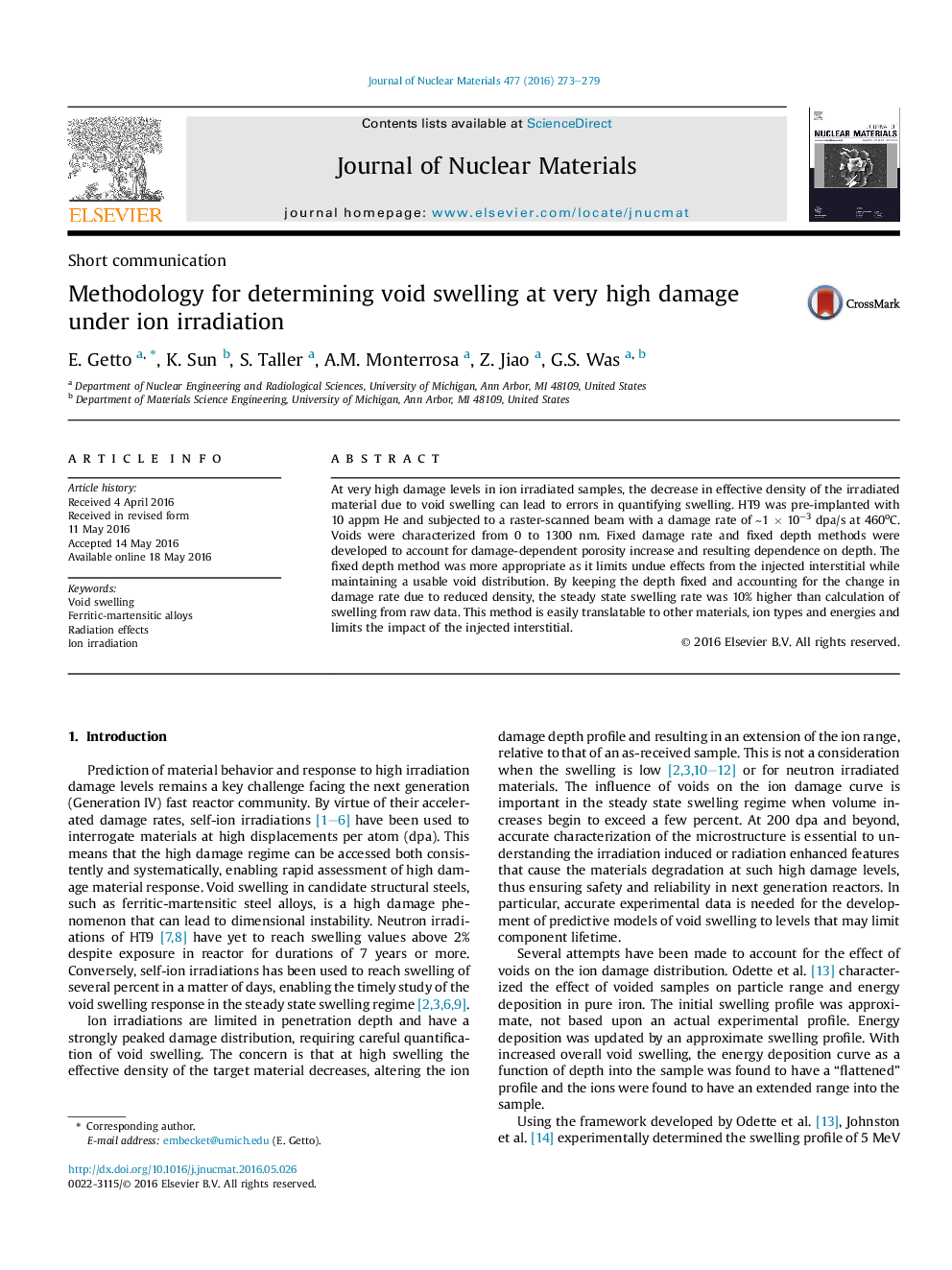| Article ID | Journal | Published Year | Pages | File Type |
|---|---|---|---|---|
| 7964210 | Journal of Nuclear Materials | 2016 | 7 Pages |
Abstract
At very high damage levels in ion irradiated samples, the decrease in effective density of the irradiated material due to void swelling can lead to errors in quantifying swelling. HT9 was pre-implanted with 10Â appm He and subjected to a raster-scanned beam with a damage rate of â¼1Â ÃÂ 10â3Â dpa/s at 460oC. Voids were characterized from 0 to 1300Â nm. Fixed damage rate and fixed depth methods were developed to account for damage-dependent porosity increase and resulting dependence on depth. The fixed depth method was more appropriate as it limits undue effects from the injected interstitial while maintaining a usable void distribution. By keeping the depth fixed and accounting for the change in damage rate due to reduced density, the steady state swelling rate was 10% higher than calculation of swelling from raw data. This method is easily translatable to other materials, ion types and energies and limits the impact of the injected interstitial.
Related Topics
Physical Sciences and Engineering
Energy
Nuclear Energy and Engineering
Authors
E. Getto, K. Sun, S. Taller, A.M. Monterrosa, Z. Jiao, G.S. Was,
